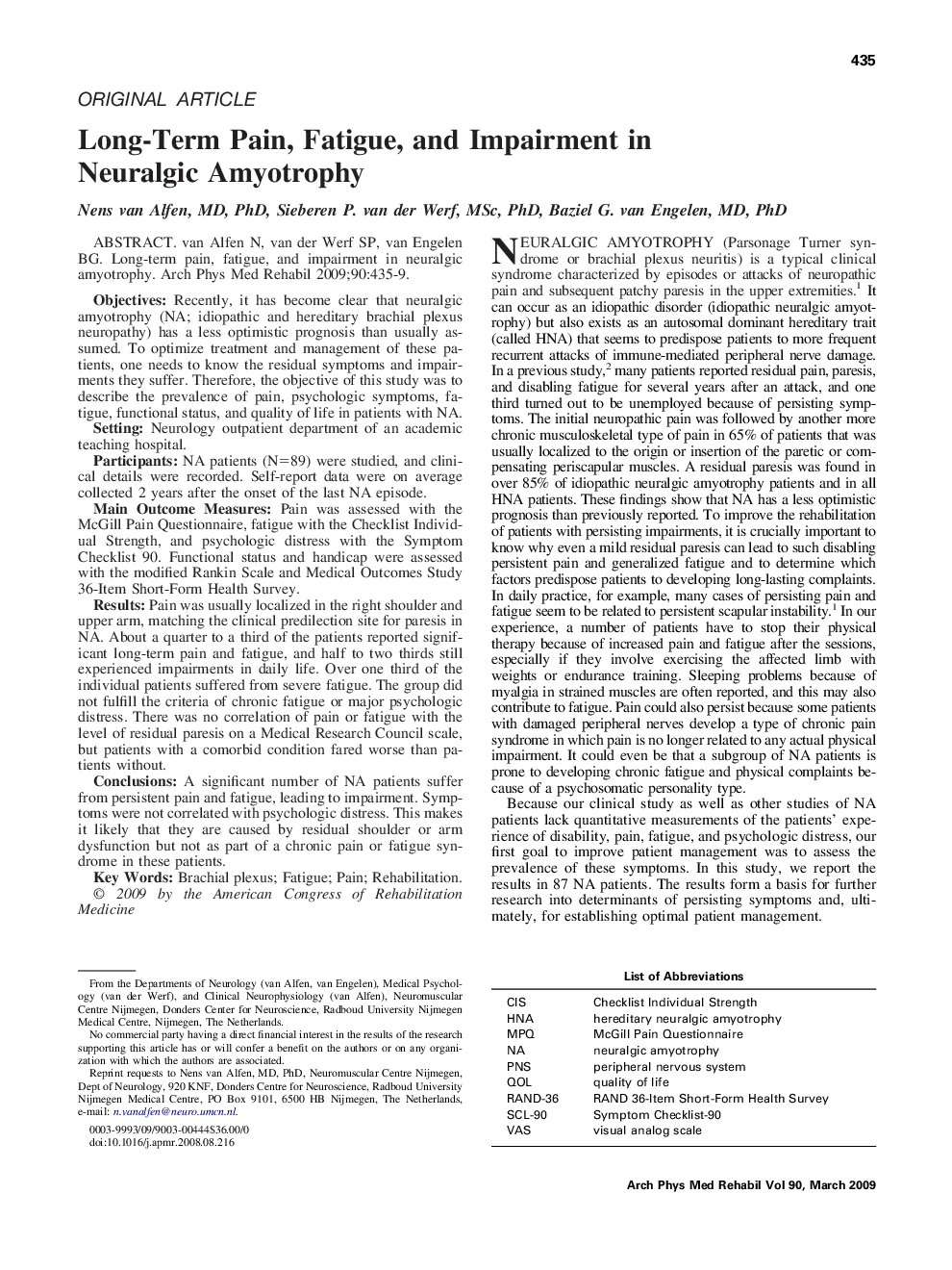| کد مقاله | کد نشریه | سال انتشار | مقاله انگلیسی | نسخه تمام متن |
|---|---|---|---|---|
| 3449880 | 1595768 | 2009 | 5 صفحه PDF | دانلود رایگان |

van Alfen N, van der Werf SP, van Engelen BG. Long-term pain, fatigue, and impairment in neuralgic amyotrophy.ObjectivesRecently, it has become clear that neuralgic amyotrophy (NA; idiopathic and hereditary brachial plexus neuropathy) has a less optimistic prognosis than usually assumed. To optimize treatment and management of these patients, one needs to know the residual symptoms and impairments they suffer. Therefore, the objective of this study was to describe the prevalence of pain, psychologic symptoms, fatigue, functional status, and quality of life in patients with NA.SettingNeurology outpatient department of an academic teaching hospital.ParticipantsNA patients (N=89) were studied, and clinical details were recorded. Self-report data were on average collected 2 years after the onset of the last NA episode.Main Outcome MeasuresPain was assessed with the McGill Pain Questionnaire, fatigue with the Checklist Individual Strength, and psychologic distress with the Symptom Checklist 90. Functional status and handicap were assessed with the modified Rankin Scale and Medical Outcomes Study 36-Item Short-Form Health Survey.ResultsPain was usually localized in the right shoulder and upper arm, matching the clinical predilection site for paresis in NA. About a quarter to a third of the patients reported significant long-term pain and fatigue, and half to two thirds still experienced impairments in daily life. Over one third of the individual patients suffered from severe fatigue. The group did not fulfill the criteria of chronic fatigue or major psychologic distress. There was no correlation of pain or fatigue with the level of residual paresis on a Medical Research Council scale, but patients with a comorbid condition fared worse than patients without.ConclusionsA significant number of NA patients suffer from persistent pain and fatigue, leading to impairment. Symptoms were not correlated with psychologic distress. This makes it likely that they are caused by residual shoulder or arm dysfunction but not as part of a chronic pain or fatigue syndrome in these patients.
Journal: Archives of Physical Medicine and Rehabilitation - Volume 90, Issue 3, March 2009, Pages 435–439